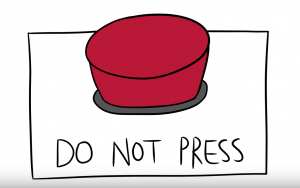Changing the Mind’s “ANTS”—Automatic Negative Thoughts
 There’s a myth that has circulated for a long time that we have somewhere between 50,000 and 80,000 thoughts per day. This would mean that each minute, we’re thinking 35 to 50 thoughts. The reality is that nobody knows how many thoughts we humans have per day … but we certainly have many! And for those with anxiety and depression, a majority of those thoughts may be automatically negative.
There’s a myth that has circulated for a long time that we have somewhere between 50,000 and 80,000 thoughts per day. This would mean that each minute, we’re thinking 35 to 50 thoughts. The reality is that nobody knows how many thoughts we humans have per day … but we certainly have many! And for those with anxiety and depression, a majority of those thoughts may be automatically negative.
In addition, as creatures of habit, humans think the same thoughts day after day after day. And if most of them are negative, that’s a big negative habit.
Thoughts don’t just “happen” to us, though—we can actually change them. We can identify the negative thoughts, we can let them go, and we can decide to put positive thoughts in their place. (By the way, this is the basis of cognitive behavioral therapy—and CBT is one of the most effective strategies for changing thought patterns. Therapy really does work.)
Here are some strategies about how to do that!
Relax your body, and your mind will follow: Negative thoughts can make the jaw clench or the stomach tie up in knots. Consciously focusing on relaxing those areas of the body in turn helps the mind relax.
Mindfulness: Be conscious of your thoughts. Even give your negative thoughts names or physical descriptions—and then tell them you will NOT pay attention to them, and let them go.

Which triggers are your personal hot buttons?
Know your triggers: Pay attention to the circumstances that affect your thinking.
Entertain yourself: this is another way of saying, Distract yourself. Do something that you enjoy, that relaxes you, and/or that helps you learn something new. Listen to music and color a picture. Quiet your mind for a while.
Exercise: Physical workouts release neurochemicals that make your body feel good, and this can counter negative thinking.
Daily journal: write down everything positive that you experienced during your day—even if you had what you’d call a “bad” day. For example, if you ate a healthful meal, that’s a positive thing! Over time, you can look at your journal and see how far you’ve come.
Talk to your image in the mirror: Say positive messages to your own face. This might feel strange at first, but it’s a powerful way to connect with yourself.
Remember that automatic negative thoughts don’t change overnight. It takes time and practice to create new thought patterns!
Check out the video below for more strategies for changing automatic negative thoughts!
What are some of your automatic negative thoughts? How have you learned to cope with them? Share your practices in the comments!




Recent Comments